Pruning Climbing Roses: Pro Techniques For Maximum Blooms
Learning how to prune climbing roses can seem daunting as the process is a little different than for other types. Master the art with our step-by-step guide.
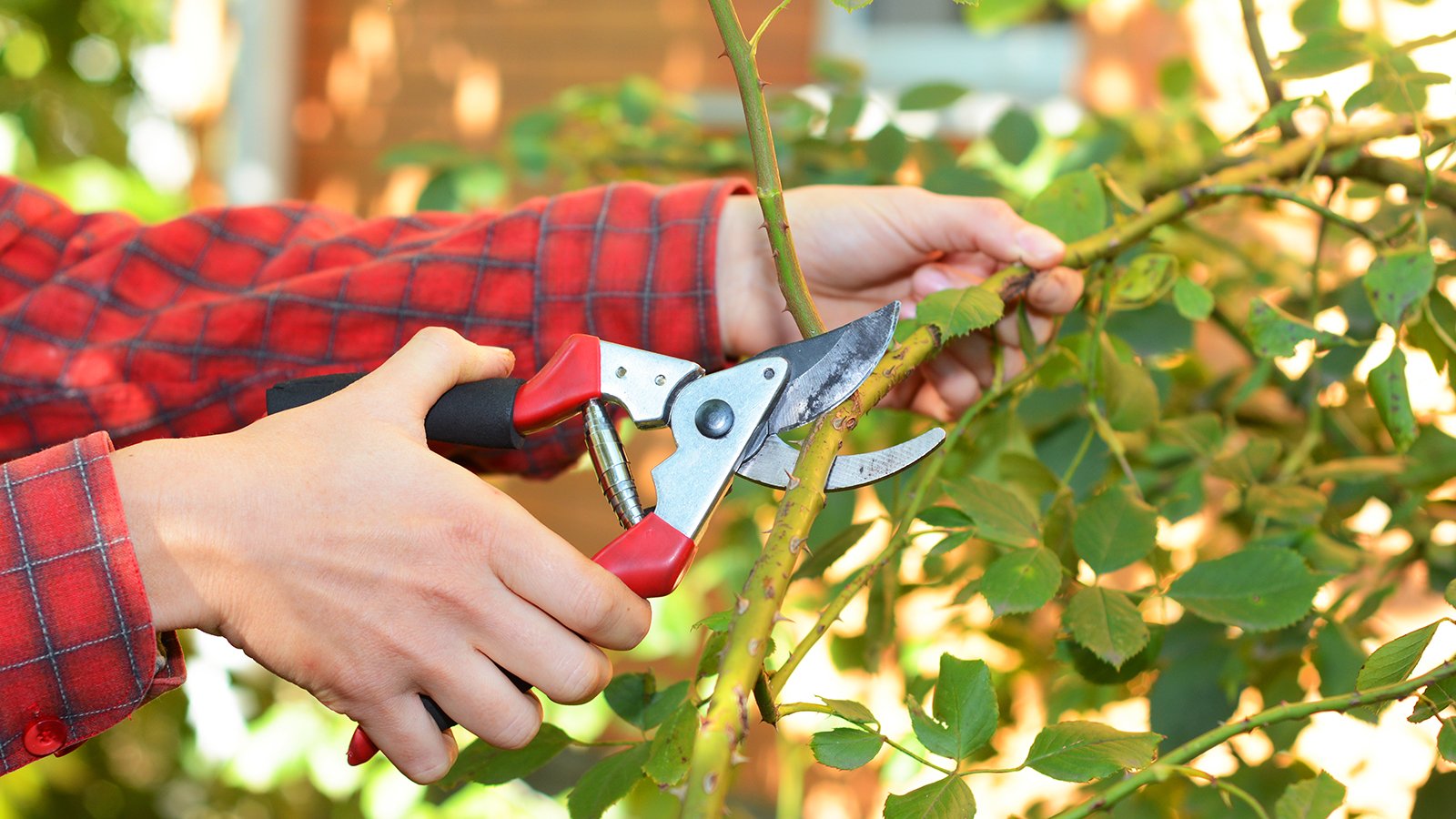

Pruning climbing roses is essential to support plants' health and maximize flowering. While most modern climbing roses have been bred to be vigorous and resistant to disease, regular maintenance is needed to ensure they look their best and to encourage a desirable growth pattern.
Growing climbing roses is a wonderful way to add vertical interest to the garden, and to enhance the privacy of patios and backyard spaces with vibrant arbors and trellises. However, with canes reaching 8 feet (2.5m) on smaller varieties and upwards of 20 feet (6m) on more vigorous growers, climbing and rambling roses can get out of control if not properly managed.
If you already know how to prune roses, that's a good starting point for tackling climbers. However, learning how to prune climbing roses is a little different than for other types of roses. The good news is that the plants are hardy and forgiving, so don't be afraid to get stuck in.
When to Prune Climbing Roses
Determining when to prune roses depends on the variety, the age of the shrub, and signs the plant is ready.
First and foremost, a good rule of thumb is to avoid pruning climbing roses for the first two or three years after planting. This will allow them to form their long arching canes. Some trimming of dead or damaged canes may be required, but keep it to a minimum.
If you want to train roses to a trellis or other feature of your garden, then keeping them tied to a support structure and growing in the desired direction early on is of the highest importance. Not doing so will cause you much frustration in trying to train the rose to go where you want it to once it has grown truly out of control.
When to prune climbing roses is different for single and repeat-blooming roses. Pruning some climbing roses too soon will greatly diminish the flowers for that season, as certain varieties bloom on the previous year's growth or what is known as the “old wood.”
Sign up for the Gardening Know How newsletter today and receive a free copy of our e-book "How to Grow Delicious Tomatoes".
The latter types are known as rambling roses. They are usually wonderfully fragrant and bloom only once during the summer. These single-blooming climbers should only be pruned right after they have bloomed. As these roses bloom on old wood, pruning them in spring will take away most, if not all, of the blooms for that season.
Repeat-blooming climbing roses need to be deadheaded regularly to help encourage new flowers. They often benefit from a minor trim in the fall, as a means to prepare the plant for winter, followed by a more thorough approach in early spring.
Extensive pruning of climbing roses should occur only when plants are dormant, and growers should make certain to complete the task before growth has resumed in spring. Once buds have started to swell and plants have broken dormancy, you will be cutting away fresh growth – although with roses it's usually a case of better late than never.
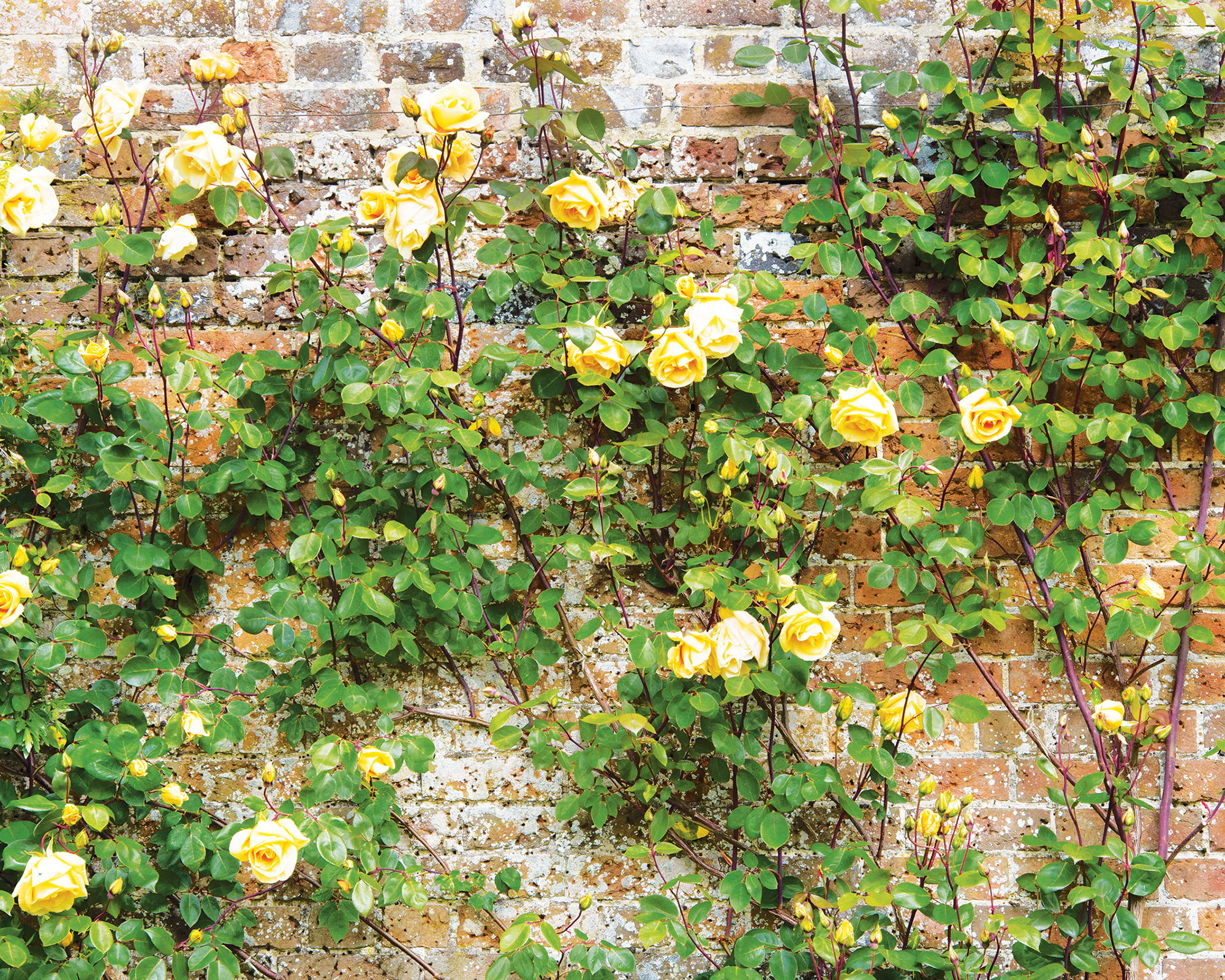
How to Prune Climbing Roses – Step by Step
Regardless of the type, climbing roses should be pruned following the same general procedure. Proper technique is essential to help prevent disease and increase vigor.
Careful observation will help to assess the overall structure and needs of the rose to be pruned. Unlike when pruning shrub roses, climbers need to be pruned with a view to their growing pattern, training them into a desirable form.
Rambling roses growing over a wall may have a freer form, but trellised climbers are often trimmed in a more structured manner, with stems varying in length to form a pyramidal shape.
1. Select the Right Tools
Start by gathering the appropriate tools. A pair of bypass hand pruners is ideal for making clean, precise cuts on more tender growth, while long-handled garden loppers are perfect for cutting old woody stems and for improving your reach. The long handles will also cut down on scratches and pokes. It is important to sterilize pruning tools between each plant to avoid the transference of disease.
A quality pair of protective gardening gloves is also essential. Gauntlet-style gloves are best, as they protect the lower arms. Not only is a scratch from a rose thorn painful, but it can also lead to a nasty rose picker's disease, such as sporotrichosis.
You can find a range of practical and beautiful gauntlet gloves in the Gardening Know How Shop. They are designed with reinforced thumb and pointer fingers so you can get stuck into pruning without worrying about punctures.
Finally, you will require something to attach your rose stems to the wire or trellis, such as zip ties or a soft, flexible cord.
2. Prune Problem Stems
Before considering shape, start by identifying problem stems that are negatively impacting the appearance of the rose.
Begin by removing any branches unable to be tied or trellised, as they will get in your way during pruning. This may include branches that are growing in an outward direction that makes them impossible to tie to the support, branches that are weak and spindly so unable to support new growth, or canes that are crossing, tangled or growing inwards.
If you need to choose between two competing branches, select the better-shaped, healthier-looking branch and remove the other. If canes are difficult to remove, then cut them into smaller sections.
Now examine the rose for any dead, damaged, or diseased canes and remove them at the base.
Also check the plant for any rose suckers, which are vigorous canes that grow from the rootstock of grafted roses, and remove these at the soil line.
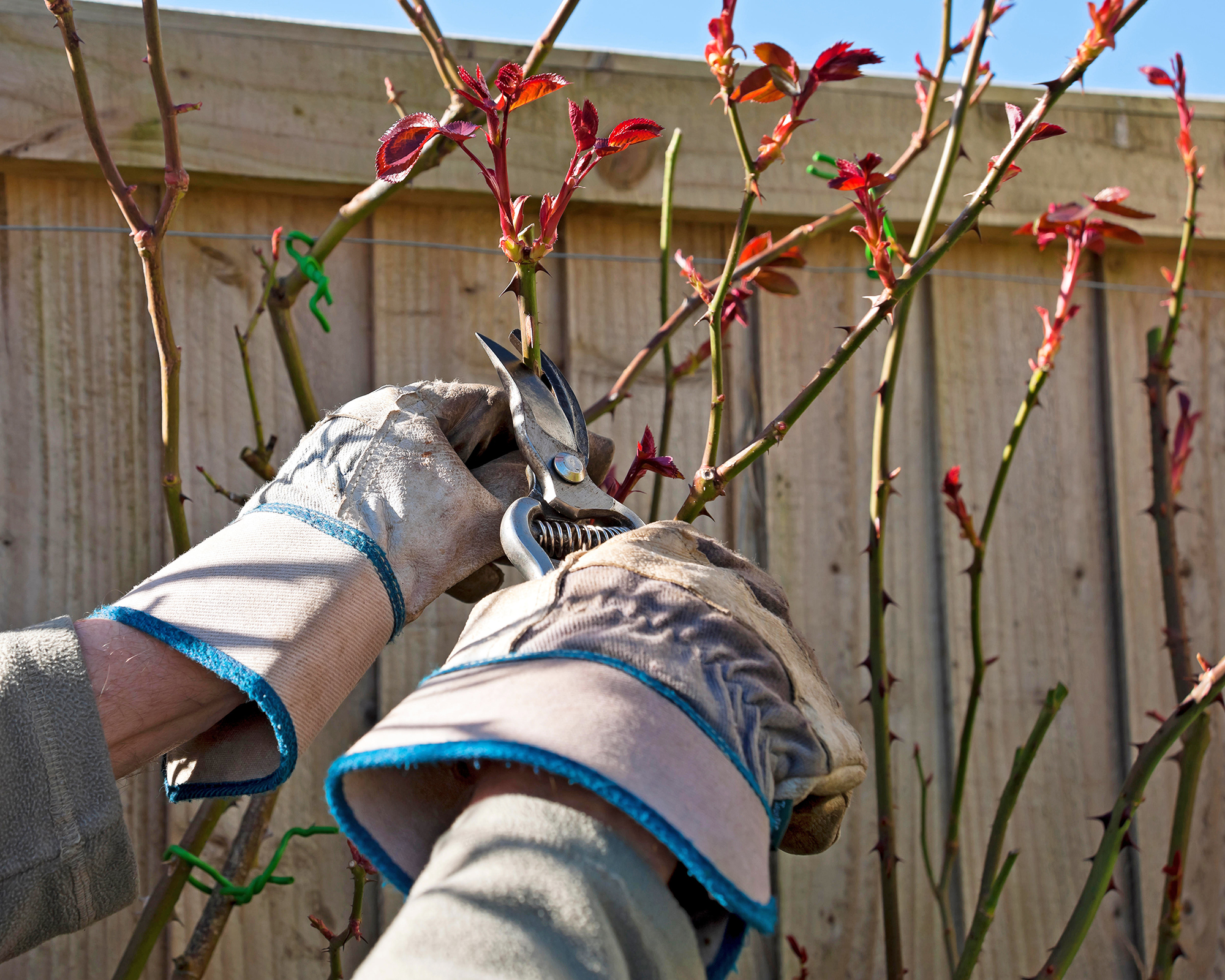
3. Prune Side Stems
Climbing roses have main supporting canes that form the overall structure, and shorter lateral stems that grow from the main canes and produce flowers. Take a good look at your rose and identify the main cains growing from the base of the rose. They may be canes that are already trained to the supporting structure, but some may also be strong new branches.
Your next step is to trim the lateral stems, taking them back to about 1 to 3 inches (2.5 to 7.5cm) from the main cane. Try to make cuts at 45-degree angles, with each slanted away from the nearest healthy bud.
Work your way across the rose, pruning lateral stems, but leaving the long canes intact for now. As you go, the plant will open up and you will more clearly be able to see the structure created by these main canes.
Minor trimming of these lateral stems can continue through spring, as needed, to better achieve the desired size and shape.
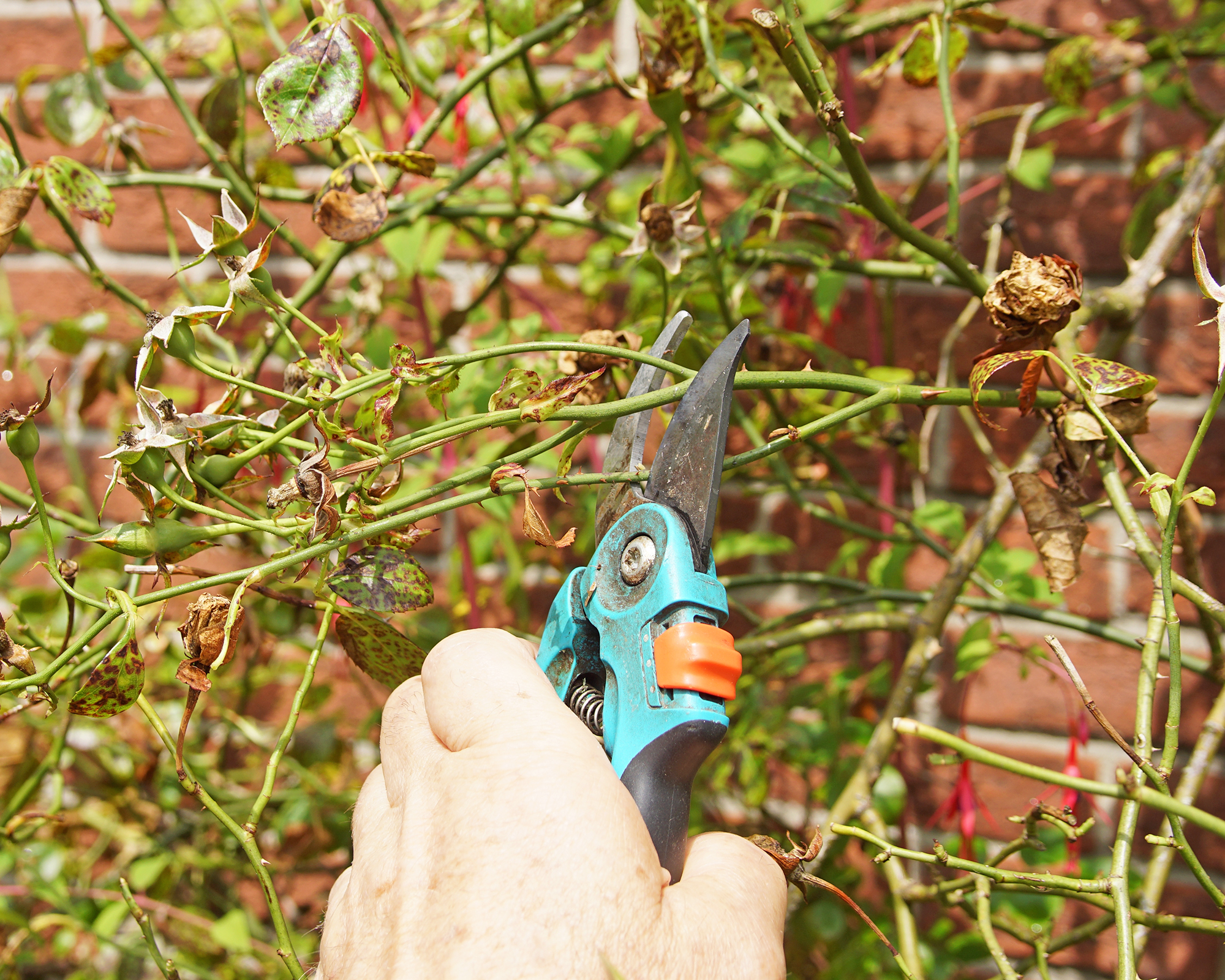
4. Assess Rose Shape
At this stage, take a step back from your rose and assess the overall shape and growing formation of the main branches. Consider what shape you want the rose to take on, and which direction you want it to grow in.
You can remove older canes on existing roses that are underperforming or have become too difficult to train. Leave the best 4-6 canes to form the structure, aiming for an even distribution.
If necessary, these healthy canes can be pruned back as much as one-third of their initial length. However, this will limit the height of the climbing rose, so should only be done as part of training.
Climbing roses can be more susceptible to rose cane borers than some other varieties. If these common rose pests are a problem in your garden, then try sealing the cut ends of the canes with Elmer's White glue after pruning. Once dry, this will harden the ends of the canes, preventing them access.

5. Train Canes
Learning how to train climbing roses the right way is key to long-term success. The strong lateral branches will be used to form the core of the plant, and each stem must be well secured to a trellis or wire framework as a means to encourage the production of flowers in spring.
The goal is to fan out the main canes and encourage them to arch over horizontally. This encourages new lateral shoots to grow upwards as they develop, forming a pleasing flowering formation.
Bend the canes into the desired shape, attaching them to the support using plastic ties. Where canes are already tied in, you may need to remove the existing ties, adjust the canes, and retie them.
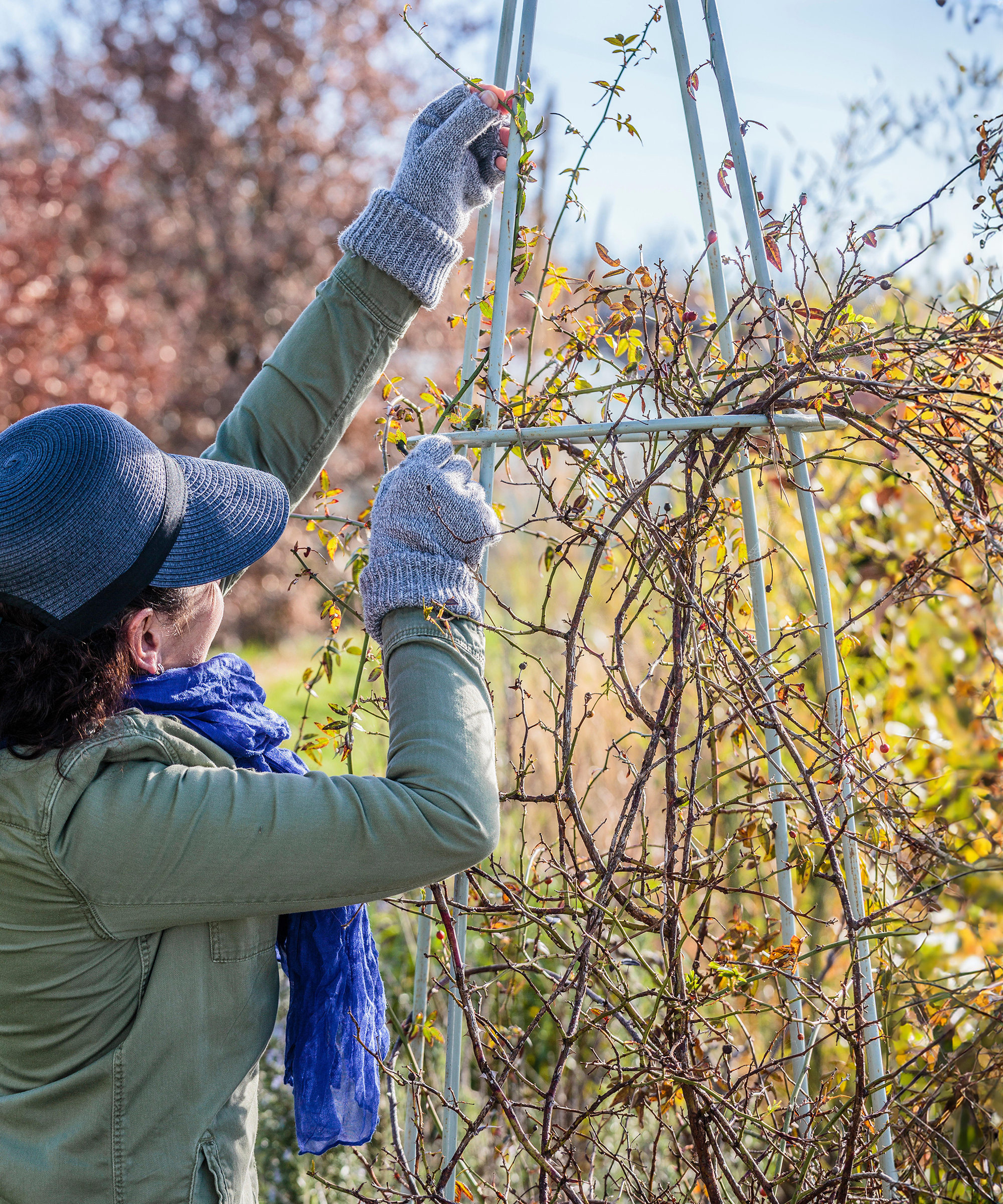
6. Tidy, Feed & Mulch
Once you have finished pruning your climbing rose, it's important to clean up all of the cut plant debris. This helps prevent the spread of common rose diseases such as black spot. Dispose of this material rather than composting it.
Now is the ideal opportunity to fertilize roses to give them the boost they need to form healthy new growth in spring. Follow this up by applying a layer of mulch, which will add further nutrients, help the soil to retain moisture, and suppress weeds. The best mulch for roses is a natural product such as bark.
Can I Hard Prune a Climbing Rose?
The term “hard pruning” is most often used to describe the process of aggressively cutting back the stems of a plant. While climbing roses can be cut back by half without issue, traditional hard pruning is not recommended.
Established canes, in the case of climbers, will play an integral role in the plant's overall structure. Therefore, cuts of this type may weaken growth and result in loss of vigor and poor flower production.
While plants that have become overgrown can be pruned with more assertiveness, best practice dictates their control with consistent, routine pruning. Growers should avoid pruning old canes en masse, instead gradually removing them over the course of several seasons.
How to Prune Climbing Roses for Winter
Many gardeners wonder if they should cut back roses in the fall as a means to prepare the plants for winter. Light pruning in late fall is likely most beneficial to plants that have become especially large, allowing landscapers to trim back more delicate growth. This will help to prevent damage done to plants when harsh or dry conditions may become most problematic. Though trimming may help to better manage overall health, aggressive pruning at this time should be avoided.
More Roses Inspiration
- Brose high-performing plants in the Gardening Know How Shop – from glorious roses to evergreen trees and native shrubs.
- Discover how to grow more roses from cuttings with this easy method for foolproof results.
- Roses not looking their best? Learn how to save a rose with 8 fixes for failing shrubs.
- Avoid these 6 rose deadheading mistakes if you want maximum blooms all summer long.
- Browse beautiful roses in the Gardening Know How Shop – handpicked for disease resistance, beauty, and performance.
This article features products available from third party vendors on the Gardening Know How Shop.
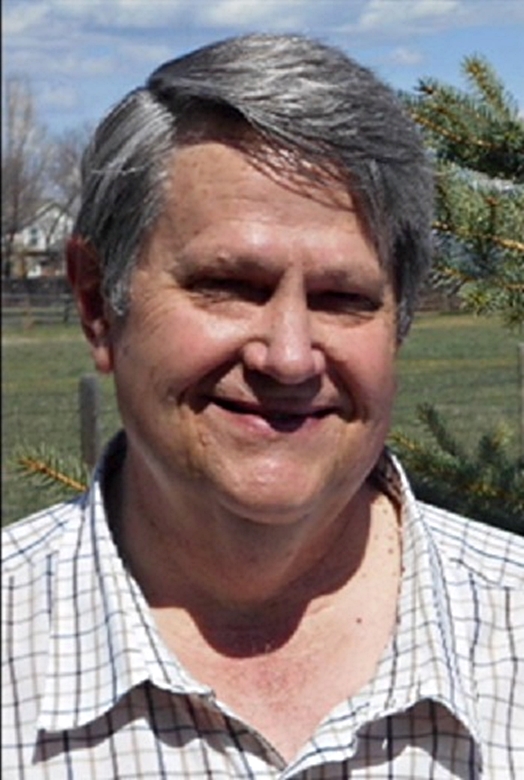
Stan V. Griep contributed to Gardening Know How for many years and has been a Colorado Native Rosarian for over four decades. He is an American Rose Society Certified Consulting Master Rosarian in the Rocky Mountain District, and a member of the Denver Rose Society, the Loveland Rose Society, and the American Rose Society. He is Gardening Know How's in-house expert on all things roses.
- Tonya BarnettWriter
- Melanie GriffithsEditor in Chief

